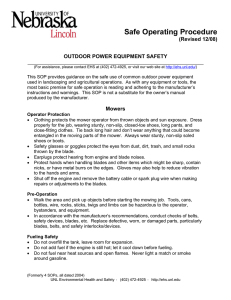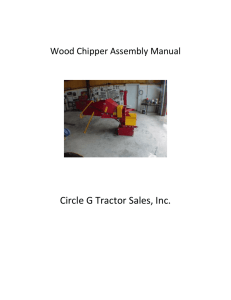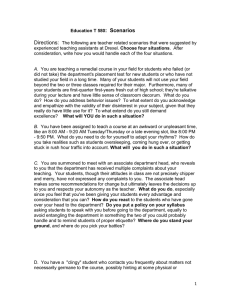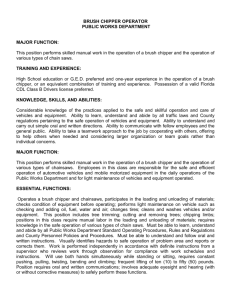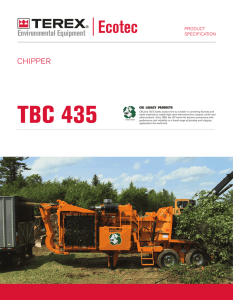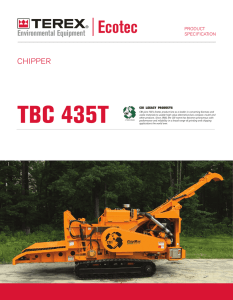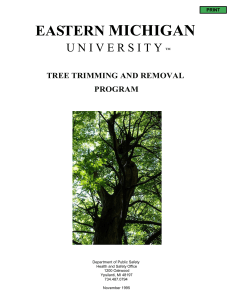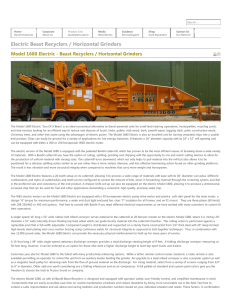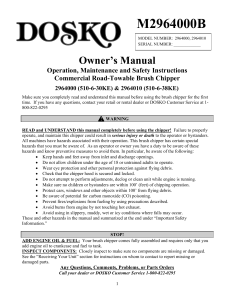Choosing a Chipper/Shredder Solid Waste Management Fact Sheet No. 15
advertisement
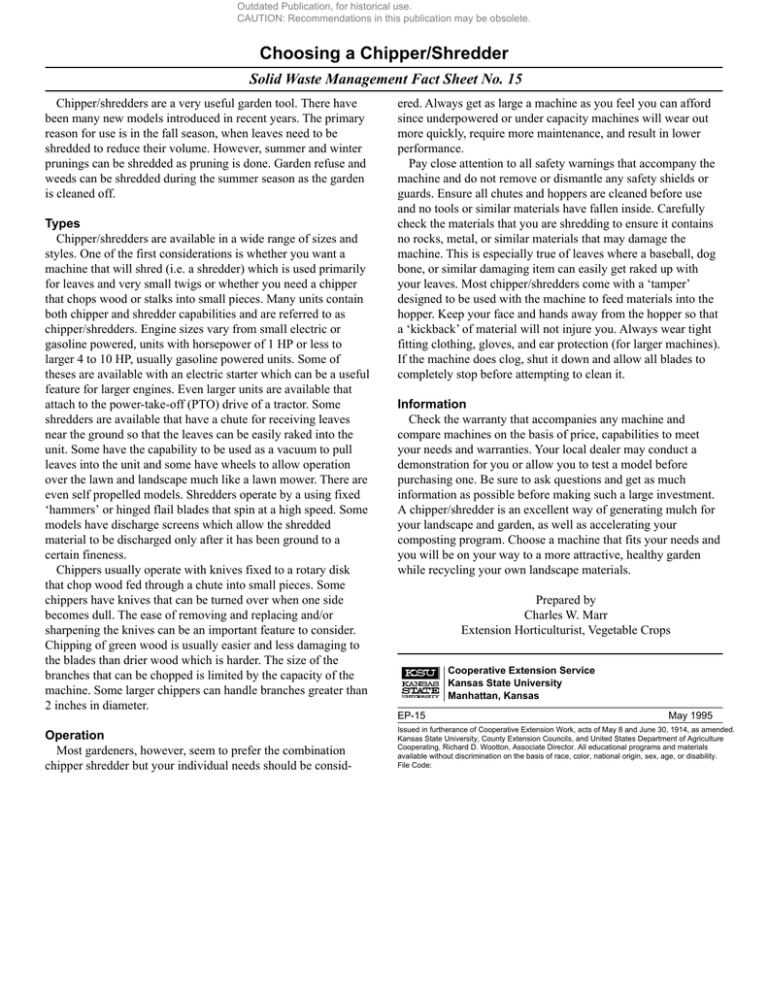
Outdated Publication, for historical use. CAUTION: Recommendations in this publication may be obsolete. Choosing a Chipper/Shredder Solid Waste Management Fact Sheet No. 15 Chipper/shredders are a very useful garden tool. There have been many new models introduced in recent years. The primary reason for use is in the fall season, when leaves need to be shredded to reduce their volume. However, summer and winter prunings can be shredded as pruning is done. Garden refuse and weeds can be shredded during the summer season as the garden is cleaned off. Types Chipper/shredders are available in a wide range of sizes and styles. One of the first considerations is whether you want a machine that will shred (i.e. a shredder) which is used primarily for leaves and very small twigs or whether you need a chipper that chops wood or stalks into small pieces. Many units contain both chipper and shredder capabilities and are referred to as chipper/shredders. Engine sizes vary from small electric or gasoline powered, units with horsepower of 1 HP or less to larger 4 to 10 HP, usually gasoline powered units. Some of theses are available with an electric starter which can be a useful feature for larger engines. Even larger units are available that attach to the power-take-off (PTO) drive of a tractor. Some shredders are available that have a chute for receiving leaves near the ground so that the leaves can be easily raked into the unit. Some have the capability to be used as a vacuum to pull leaves into the unit and some have wheels to allow operation over the lawn and landscape much like a lawn mower. There are even self propelled models. Shredders operate by a using fixed ‘hammers’ or hinged flail blades that spin at a high speed. Some models have discharge screens which allow the shredded material to be discharged only after it has been ground to a certain fineness. Chippers usually operate with knives fixed to a rotary disk that chop wood fed through a chute into small pieces. Some chippers have knives that can be turned over when one side becomes dull. The ease of removing and replacing and/or sharpening the knives can be an important feature to consider. Chipping of green wood is usually easier and less damaging to the blades than drier wood which is harder. The size of the branches that can be chopped is limited by the capacity of the machine. Some larger chippers can handle branches greater than 2 inches in diameter. Operation Most gardeners, however, seem to prefer the combination chipper shredder but your individual needs should be consid- ered. Always get as large a machine as you feel you can afford since underpowered or under capacity machines will wear out more quickly, require more maintenance, and result in lower performance. Pay close attention to all safety warnings that accompany the machine and do not remove or dismantle any safety shields or guards. Ensure all chutes and hoppers are cleaned before use and no tools or similar materials have fallen inside. Carefully check the materials that you are shredding to ensure it contains no rocks, metal, or similar materials that may damage the machine. This is especially true of leaves where a baseball, dog bone, or similar damaging item can easily get raked up with your leaves. Most chipper/shredders come with a ‘tamper’ designed to be used with the machine to feed materials into the hopper. Keep your face and hands away from the hopper so that a ‘kickback’ of material will not injure you. Always wear tight fitting clothing, gloves, and ear protection (for larger machines). If the machine does clog, shut it down and allow all blades to completely stop before attempting to clean it. Information Check the warranty that accompanies any machine and compare machines on the basis of price, capabilities to meet your needs and warranties. Your local dealer may conduct a demonstration for you or allow you to test a model before purchasing one. Be sure to ask questions and get as much information as possible before making such a large investment. A chipper/shredder is an excellent way of generating mulch for your landscape and garden, as well as accelerating your composting program. Choose a machine that fits your needs and you will be on your way to a more attractive, healthy garden while recycling your own landscape materials. Prepared by Charles W. Marr Extension Horticulturist, Vegetable Crops Cooperative Extension Service Kansas State University Manhattan, Kansas EP-15 May 1995 Issued in furtherance of Cooperative Extension Work, acts of May 8 and June 30, 1914, as amended. Kansas State University, County Extension Councils, and United States Department of Agriculture Cooperating, Richard D. Wootton, Associate Director. All educational programs and materials available without discrimination on the basis of race, color, national origin, sex, age, or disability. File Code:

